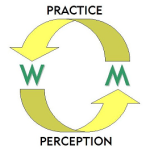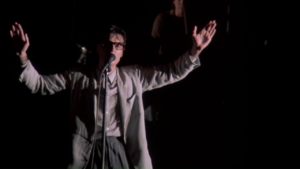The sacred text is what the sacred river is currently reading, the streambed of consciousness.
(Stoop), if you are abcedminded, to this claybook, what curios of signs (please stoop) in this allaphbed! Can you rede (since We and Thou had it out already) its world? It is the same told of all.
— The Restored Finnegans Wake, 14
Drawing nearer to take our slant at it (since after all it has met with misfortune while all underground), let us see all there may remain to be seen.
— Finnegans Wake, 113
The act of meaning the sacred text involves collision and collusion with the limits of language.
Beware lest ye be hindered by the veils of glory from partaking of the crystal waters of this living Fountain.
— Bahá’u’lláh, Kitáb-i-Aqdas ¶50
But give glad tidings to those who believe and work righteousness, that their portion is Gardens, beneath which rivers flow. Every time they are fed with fruits therefrom, they say: “Why, this is what we were fed with before,” for they are given things in similitude; and they have therein companions pure (and holy); and they abide therein (for ever).
— Qur’án 2:25 (Yusuf Ali)

